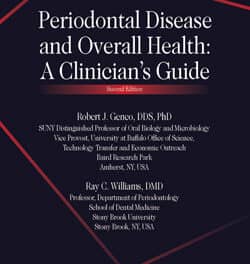byAlena Pacheco
Marketing your practice in a high-tech world
 |
Not so long ago, marketing was a topic discussed in orthodontics with extreme care, perhaps out of fear that it was somehow considered less than professional. It has taken more than a decade, but orthodontists across the country have finally embraced the notion that marketing is indeed a necessity of doing business. In a 2005 survey conducted by the Sid Craig School of Business MBA Research Project, almost 85% of orthodontists indicated that they participate in marketing activities of one kind or another. And rightly so! In today’s competitive marketplace, it makes sense that orthodontists should develop a strong marketing message and then communicate that message to patients, parents, and referral sources. Most orthodontists can now agree that marketing is not only professional, it’s smart. Forward-thinking practitioners have also realized that smart marketing in today’s high-tech world doesn’t necessarily mean eliminating traditional, paper-based methods. On the contrary, it’s about blending the traditional and the innovative to develop a systematic approach to marketing that communicates value to patients, parents, and referral sources.
Communicating in this fast-paced world is no easy task. It means keeping up with families who are busier than ever before. A visit to the orthodontist’s office can often conflict with any number of other commitments: work, school, baseball, piano, tae kwon do—and let’s not forget about homework or the occasional family dinner. Since 90% of American adults send and receive e-mails (according to the 2006 Pew Internet and American Life Project Tracking Survey), it makes sense that we should use this medium to communicate with existing patients about things like appointments and finances. The big question is whether or not digital communication has replaced paper when it comes to marketing.
 |
| Alena Pacheco |
Paper Versus Paperless Marketing
In the 1990s, the “paperless practice” was the ultimate goal for many orthodontists. Even the business world at large was anticipating that technology would eventually do away with paper altogether. It became clear, however, that the more technology allowed us to create documents, the more we wanted to print them out. In fact, since the dawn of the personal computer in 1984, the number of pages printed by American companies has grown by more than 500%. According to the 2000 Data Administration Newsletter, published by Robert Seiner, more information has been produced in the past 30 years than in the entire history of civilization! For most organizations, documents are the tools that run a business every day. They prompt customers to buy and workers to work. So what are we to make of this in the age of marketing the “digital practice”? A glimpse into the retail world may help us find that answer.
In November 2006, BusinessWeek.com cited a very interesting article on how the technology trend has played out in the retail market. Among other things, the article discussed how the proliferation of e-commerce has significantly affected retail catalog sales. The Internet has dramatically changed the landscape of the shopping experience, and many large retailers have seen a drop in sales from their catalogs and an increase in their online revenue. Statistics would seem to validate a decision to get rid of catalogs altogether, but retailers are convinced otherwise. One marketing vice president describes the catalog as “still the best way to make an emotional appeal to customers.” Despite declining catalog sales, the number of catalogs being sent out has actually increased. According to the Direct Marketing Association, the number of catalogs mailed in 2005 increased 5.5%, up from 3.8% in 2003. And the total figure is staggering: Almost 20 billion catalogs are mailed out each year.
If catalog sales are declining, how can catalogs still be considered an effective marketing tool? The answer lies in the understanding that the Internet has not done away with the traditional catalog; it has simply changed the way the catalog is used. Catalogs have taken on a new image as “brand-building” devices that prompt new customers to visit online sites. Even Web-only retailers have begun using sleeker, magazine-type catalogs to promote a particular lifestyle that serves to reinforce the brand. In essence, the catalog has been adapted to meet the needs of the high-tech marketer.
So how does this relate to marketing in the orthodontic world? Obviously, I don’t encourage orthodontists to send out catalogs like national retailers. But we can and should take a page from their book and realize that despite the shift toward technology and the Internet, good old-fashioned paper can go a long way toward reinforcing the brand that is created in the orthodontic office through state-of-the-art technology. Just as national retailers use catalogs to make an emotional appeal, so too can orthodontists use their written materials. There is still something very reassuring about plain old paper, not the least of which is the fact that we can touch it.
The question, then, is how do orthodontists balance their marketing efforts between the traditional use of paper and its technologically advanced digital counterparts? The great news is that you don’t have to choose. You can and should do both. You should give your patients tangible, visual clues about the level of service you provide, and you should reinforce that through state-of-the-art use of technology. Rather than do away with practice brochures and other written marketing materials, it’s time that you adapt them to work in unison with the other high-tech tools that are available.
System First, Then Strategy
Any number of different marketing strategies can help improve the bottom line. The solution is not in the strategy itself, but rather in the marketing system.
The American Marketing Association defines marketing as a process, not as a single, one-time event. It is not a single delivery to a referring office or a single presentation to a fourth-grade class. Marketing is a set of events, related to one another, that communicate value to patients, parents, and referral sources. Digital imaging, practice brochures, Web sites, CD business cards, and direct mail postcards are all effective tools, but only when used as part of a larger system that is monitored for success and followed up on regularly. Unfortunately, many practices often get so busy with the day-to-day tasks of caring for patients that marketing becomes sporadic and unplanned. Some consultants refer to this as “spaghetti marketing,” the tendency to throw strategies on a wall to see what sticks. You wouldn’t think of taking that approach with the treatment or your patients. The same should hold true for your marketing program.
Identify Your Message and Target Audience
As you begin to create a systematic approach to marketing, one of the first steps is to develop your practice message and identify your target audience. Carol Eaton of Eaton Consulting has created an entire worksheet that walks her clients through this process. It prompts clients to list such things as “distinguishing qualities that reflect the service they provide,” “state-of-the-art equipment and new technology available,” and “unique educational tools such as classroom presentations and school field trips.” Understanding your practice’s message means understanding the value that you intend to create, communicate, and deliver to your customers. It is equally important to know who your customers are and what their distinguishing characteristics are.
| For more ideas about how to promote your practice, search for “” in our online archives. |
Creating a systematic approach to marketing is certainly no easy task. After targeting your audience and identifying your practice message, the next step is to evaluate individual marketing strategies based on how well they communicate your practice message to your target audience. Regardless of whether you choose to go high-tech or stick with more traditional techniques, one great way to get started is by selecting strategies that correlate to the SMART acronym. Strategies should be Specific, Measurable, Attainable, Relevant, and Timely. Outlining clear strategies that meet the SMART criteria will help the entire team stay focused on the goals at hand without getting sidetracked.
Embrace Change
In business, as in life, the one thing we can be certain of is change. The same can be said for marketing. Referral sources become competitors, patients shop around, and insurance companies limit choices. While many of these factors are out of your control, the ability to proactively and systematically plan for them is not. Rather than concern yourselves with trading in that practice brochure for a high-tech CD business card, you should focus first on creating a SMART marketing system. The right mix of strategies, both traditional and innovative, will allow you to send the right message to the right audience at the right time.
Alena Pacheco is the owner of Core Communications in Kerman, Calif. She works as a marketing consultant for orthodontists nationwide and specializes in the development of customized marketing materials. She can be reached at (888) 321-4744 or









